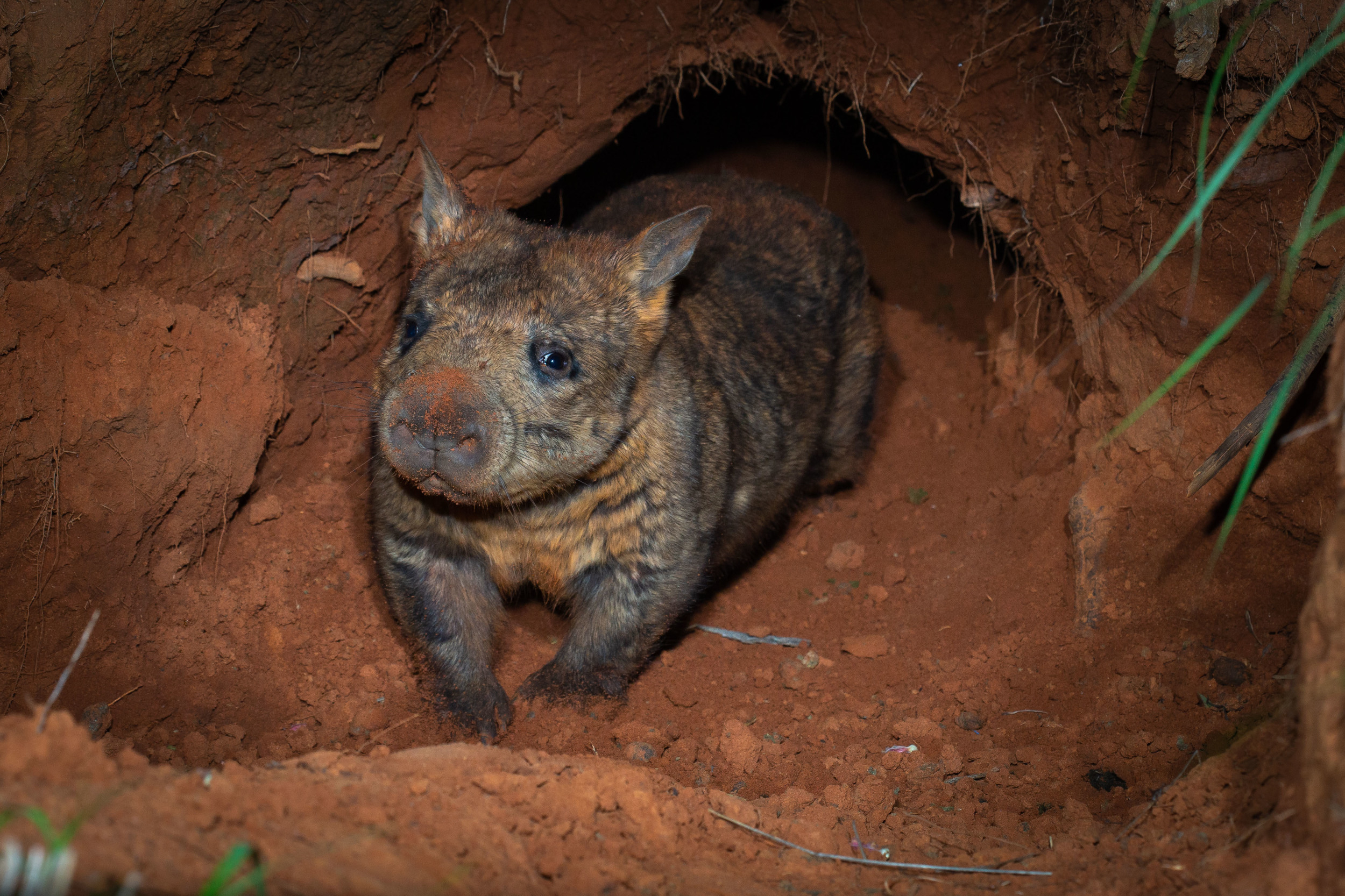Ecologists at the Australian Wildlife Conservancy (AWC) have celebrated a significant milestone in conservation efforts after capturing rare footage of a critically endangered baby northern hairy-nosed wombat taking a late-night stroll in southwest Queensland.
With only 400 individuals left in the world, every sighting, especially of a juvenile, is important.
The northern hairy-nosed wombat, one of Australia’s most endangered mammals, is only found in three locations: Epping Forest National Park, Powrunna State Forest and Richard Underwood Nature Refuge (RUNR), where this individual was recently spotted.
“It’s very gratifying to know that one of the world’s most critically endangered animals is doing well and breeding within the safety of the fenced area,” Andy Howe, AWC Senior Field Ecologist, said in a statement.
Brad Leue/Australian Wildlife Conservancy
Howe made the discovery while scrolling through over 100 hours of camera trap footage from the RUNR. The wombat is seen emerging from an active burrow—clear evidence that breeding is taking place in the refuge once again.
Based on the footage, the juvenile wombat appeared to be in good health, with a smooth coat and no visible injuries. Howe believes this wombat is likely a joey first detected as a large pouch on another wombat earlier in 2023.
Wombats are marsupials, so like some of Australia’s other iconic residents—think koalas and kangaroos—their newborns stay snug and protected in their mother’s pouches.
“The wombat is quite robust, indicating that it is feeding well and getting enough nutrition,” Howe added. “Overall, this bit of footage tells us a lot about the state of the RUNR population, showing us that the wombats have the right conditions and feel comfortable enough to breed.”
Motion-sensor cameras, funded by a federal grant from the Department of Climate Change, Energy, the Environment and Water’s Saving Native Species program, have been instrumental in monitoring these wombats.
The $384,000 grant will also support further research and conservation efforts, including the development of a fire management strategy, weed control and the prevention of feral herbivore incursions.
Fire management is particularly important, with close to half a billion mammals, birds and reptiles affected by blazes, according to a 2020 report.
AWC is also collaborating with the University of Adelaide on a Genetic Management Plan, which will involve collecting and analyzing wombat hair samples to inform future translocations and enhance genetic diversity within the species.
“Government funding enables AWC and its partners to improve the trajectory of the species by reducing key threats, commencing a genetic management plan and increasing data knowledge—all of which will support a growing and sustainable population at RUNR and hopefully assist with the establishment of future populations,” Howe said.
Do you have a tip on a science story that Newsweek should be covering? Do you have a question about rare animals? Let us know via science@newsweek.com.
